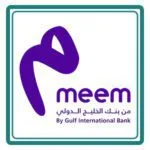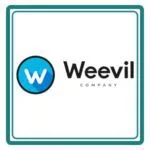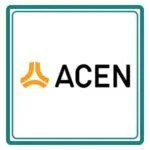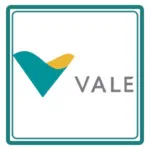ISO 22000 Certification in Johannesburg
Get Free Consultation
PopularCert provides expert guidance and customized solutions in Johannesburg to help organizations achieve ISO 22000 certification effectively, ensuring compliance and long-term success. ISO 22000 certification in Johannesburg enables businesses to establish a robust Food Safety Management System (FSMS), ensuring the safety and quality of food products across the supply chain. It boosts consumer trust by showcasing adherence to global food safety standards. This certification is critical for mitigating risks, meeting regulatory requirements, and preventing foodborne hazards. Additionally, ISO 22000 enhances operational efficiency, streamlines processes, and drives continuous improvement in food safety practices. It also bolsters an organization’s reputation, attracting more customers and creating new business opportunities
Why ISO 22000 Certification is Essential in Johannesburg?
ISO 22000 certification is essential in Johannesburg to ensure food safety throughout the supply chain and meet global standards. It helps organizations comply with local and international food safety regulations, minimizing risks and preventing foodborne hazards. The certification enhances consumer confidence, strengthens brand reputation, and supports market competitiveness. It also improves operational efficiency, streamlines processes, and fosters continuous improvement in food safety practices. In a diverse and growing market like Johannesburg, ISO 22000 certification is a vital tool for businesses seeking to expand and succeed in the food industry.
How to Get ISO 22000 Certification in Johannesburg ?

Process to Get ISO 22000 Certification in Johannesburg
Consultation and Gap Analysis
PopularCert’s experts evaluate your organization’s specific requirements and current systems. We conduct a thorough gap analysis to identify areas that need improvement to comply with ISO 22000 standards.
Planning, Documentation, and Policy Development
Based on the gap analysis, we design a customized implementation plan, define resource requirements, and assist in developing food safety policies and documentation. These are integrated seamlessly into your existing framework.
Training and Awareness
We provide comprehensive training to ensure your team understands ISO requirements and their roles in maintaining an effective management system.
Internal Audit and Management Review
Our team conducts internal audits to assess the effectiveness of your food safety system and address any non-conformities. A management review ensures alignment between the system, your organizational goals, and ISO 22000 standards.
External Certification Audit and Certification
Upon successfully completing the external audit conducted by a certification body, your organization will receive the ISO 22000 certificate. This certification demonstrates your commitment to food safety, international standards, and building customer trust while ensuring continuous improvement.
Benefits of ISO 22000 Certifications In Johannesburg
- Enhanced Food Safety: Ensure food safety management systems meet international standards, reducing contamination risks.
- Regulatory Compliance: Demonstrates compliance with Johannesburg’s legal and regulatory food safety requirements.
- Improved Customer Trust: Build consumer confidence by showing commitment to delivering safe and quality food products.
- Global Market Access: Opens doors to new markets by meeting international food safety requirements.
- Operational Efficiency: Streamlined processes result in reduced wastage, better resource utilization, and cost savings.
- Risk Management: Identify and mitigate food safety risks effectively, ensuring consistent quality.
- Improved Collaboration: Strengthens teamwork and communication across all levels of the supply chain.
- Competitive Advantage: Gain a competitive edge by showcasing food safety credentials to stakeholders and customers.
Types Of ISO Certification In Johannesburg
Get Free Consultation
Our Clients


















Case Study: A Johannesburg Catering Company Obtains ISO 22000 Certification to Improve Food Safety and Business Credibility
In Johannesburg, South Africa, a mid-sized catering and food distribution business was having trouble keeping up with the growing demands of hospitals, schools, and corporate clients regarding food safety. The business recognized that it needed ISO 22000 Certification in Johannesburg in order to remain credible and competitive in the local and regional market as compliance and risk management became more and more important.
For full-service consulting on putting the ISO 22000:2018 Food Safety Management System (FSMS) into practice, they turned to PopularCert. In order to align current practices with South African food regulatory frameworks, including those from the Department of Health and SANS 10049 guidelines, as well as international food safety standards, PopularCert started a comprehensive gap assessment.
With our help, the businesses:
- implemented the Hazard Analysis and Critical Control Point (HACCP) principles in all distribution points and kitchens.
- improved their cross-contamination controls and temperature monitoring systems.
- Employees with training in FSMS documentation, allergen management, and food hygiene
- created a strategy for audit readiness and a corrective action plan.
In less than four months, the company obtained ISO 22000 certification, establishing them as a reliable supplier for important institutions in Johannesburg and creating new business opportunities with Gauteng Province’s export-focused retailers.
Following certification, the company observed:
- 25% increase in the number of clients, particularly from the education and health sectors
- Decreased food recalls and non-compliance
- Enhanced consumer trust and brand credibility in a fiercely competitive local market
This success story shows how ISO 22000 certification is a strategic investment for Johannesburg food businesses looking to increase resilience, quality, and trust throughout the value chain, rather than just being about compliance.
Cost of ISO 22000 Certification in Johannesburg
The cost of obtaining ISO 22000 certification in Johannesburg depends on various factors, including the size and complexity of the organization, the specific processes involved, and the scope of the certification. Typically, expenses can range from a few thousand to tens of thousands of dollars, reflecting the depth of the assessment and the resources required to meet the standard’s criteria.
Improve food safety with ISO 22000 Certification in Johannesburg. Learn how to get certified and apply seamlessly with expert consultancy offering tailored solutions and reliable guidance at a competitive cost.
Why Choose PopularCert for ISO 22000 Certification in Johannesburg?
Are you planning to achieve ISO 22000 certification in Johannesburg? PopularCert is your trusted partner for expert guidance and seamless support throughout the certification process. Our experienced professionals are dedicated to helping your organization implement and comply with ISO 22000 requirements, enhancing food safety, operational efficiency, and market credibility.
At PopularCert, we tailor our services to meet your organization’s specific needs and provide continuous support to maintain compliance. Our commitment to quality and customer satisfaction ensures a smooth and efficient certification journey. To learn more or get started, reach out to us at [email protected].
GET A FREE CONSULTATION NOW
FAQ
What is ISO 22000 and why is it important in Johannesburg?
ISO 22000 is a food safety standard for businesses in the global food chain which is used to specify the requirements for food safety management system where the organizations in the food chain need to exhibit their ability to control food safety hazards, in order to assure that food is secure at the time of human consumption. It is considered important in Lusaka as it ensures that people are consuming healthy food and also helps in upholding the organization’s reputation in the market.
What are the Benefits of ISO 22000 certification in Johannesburg?
The Food Safety Management System presented in ISO 22000 can help a business produce food products with better safety, reliably high quality, improve customer satisfaction, boost operational efficiency, manage risk and more. Like other types of ISO certification, ISO 22000 certification shows your company’s stakeholders that you prioritize food safety and effective management. With ISO 22000 certification, you may even be able to get more business, since many international companies will only work with ISO-certified partners.
Who Should Get ISO 22000 Certification in Johannesburg?
ISO 22000 certification has the potential to benefit a wide array of businesses related to food industry. Some of the organizations which can benefit from implementing ISO 22000 in Lusaka are as follows:
- Food manufacturing industry
- Food ingredients industry
- Food additives
- Food transportation
- Packing of food materials
- Selling of food (retail or wholesale)
- Serving prepared foods (Supermarkets or Hypermarkets)
- Production of food equipment
How Does ISO 22000 Certification Work in Johannesburg?
To earn ISO 22000 certification, you will need to implement some prerequisites in order to fulfill the requirements to apply for the ISO 22000 certificate and successfully complete an Initial Certification Audit. After earning the initial certification, you will need to complete yearly surveillance audits and re-certification audits every three years to maintain your certification. The audits must be completed by an accredited third-party certification body. In addition, you must be able to prove that your FSMS has undergone a management review and a full cycle of internal audits before you can earn ISO 22000 certification.
